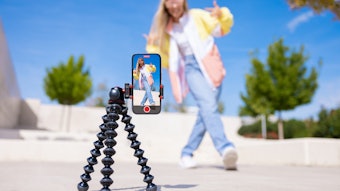
Part I of this article, which appeared in the March 2013 issue of Skin Inc. magazine, discussed the topics of online discounting, search engines, going mobile, online directories and review sites, and the importance of monitoring your skin care facility’s online presence. Part II of this article includes additional tips, tricks and strategies about how best to build and maintain your website, as well as your social media presence, to better support the success of your business.
Your facility’s website
Consumers may discover your business via other sources, but those sources are likely to send them straight to your website for more information. One of the most important things you can do to convert interested browsers into actual clients—especially those who search using mobile rather than desktop—is to make sure your website doesn’t drive them away with a clunky, dated design that’s impossible to navigate on a mobile device. Be sure to take a look at your website on a smartphone and tablet. If you need to zoom and scan continuously to read everything, it’s time for a content overhaul. Streamline your home page and make sure your navigation is simple, easy and visible. Only include images that enhance, not frustrate, the user’s experience. All too often businesses feel the need to post all of their information on the home page. This just overwhelms visitors and discourages them from exploring your site further.
On the other hand, your website needs to do more than just provide contact info. It must serve as a hub connecting all of your other online channels together which, as a whole, create your online presence. Some signs that your website is an online paperweight instead of a dynamic information hub include the following.
- Google Analytics is showing little traffic to and from your website, and even less traffic within your site (page views).
- No one is referencing your website when they call to book your services.
- No one is booking services through your website—or you don’t offer online booking options.
- Clients are calling to ask for directions or special offers, rather than visiting your website.
- Your social media sites do not link back to your website and vice versa.
- You don’t include any calls to action on your home page that link visitors to your newsletter, social media sites, introductory offers, online store or online booking.
If you’re having trouble deciding what should be on your home page, consider that a good thing! To maximize your website’s sales potential, you need to make it an effective landing spot to receive visitors driven there by your other online and marketing channels. The longer visitors are on your site, the deeper they go into your pages, the more likely they are to commit to a visit offline. Links on your home page should entice visitors to learn more and stay engaged. Include links to your newsletter, social media sites (Facebook, Twitter, YouTube, Pinterest), introductory offers, an online store and online booking.
Online booking. Online booking is a convenience that your clients will soon come to expect—if they aren’t demanding it already. Fifty percent of women studied say they don’t have enough free time, according to the Families and Work Institute. Online booking helps them find more time by allowing them to book your services when it’s convenient for them. To set up online booking, you will need online appointment-scheduling software. Ideally, this scheduling software would integrate with a customer relationship management (CRM) system to allow for better client tracking, appointment notifications and marketing outreach, as well as providing an integrated, online staff schedule.
Make sure you’ve gathered the following information before building out your online booking platform:
- List of your business locations with contact info;
- List of your staff members, including names, bios and photos, what services they perform, and the days and times they are available;
- List of your services, including name, length, price and description, and which team members perform those services; and
- Categories of services, if you have many, and which services belong to each category.
Remember, your website is the online window visitors peek into to get an idea of what it would be like to visit your location. What are the questions new clients typically have? Answer them on the site with videos or blogs that demonstrate specific techniques clients are most curious about, a FAQ section, testimonials from other clients about their experiences, video interviews with your therapists and technicians, and any other content that will engage them and entice them to visit. For the videos, use YouTube—it’s the No. 2 search engine out there and it’s free.
Social media
Did you know that, according to Nielsen, 46% of people worldwide use social media to help with purchasing decisions. With hundreds of social networking sites on the web today, how do you determine which are the best for your skin care facility? Best practice dictates that you should be where your clients are, but how do you figure that out? The best way: Ask them. Survey your clients after an appointment or via Facebook and e-mail. Also, check out your social sites’ analytics for info on which platforms visitors are using when they access your sites.
In the meantime, it’s a safe bet to start with the most popular social sites out there. Follow these quick tips to get started with ease.
- Make your cover photo unique and compelling. Make it you.
- Position your links in a visual order to inspire engagement.
- Honor your skin care facility’s most important moments as company milestones.
- Draw attention to specific posts by placing them across both columns.
- Chat one-on-one with users via direct messaging, when appropriate.
- Know who you’re reaching, and how effectively, using Facebook’s real-time analytics.
YouTube
- Install background visuals similar in style to your website.
- Upload videos that highlight your facility’s experience, therapists and wellness tips. A video tour of your facility is a must.
- Link to your other social channels and your website.
- Feature your latest video on your home page, linked back to your channel.
- Use YouTube’s analytics to measure the appeal of your videos.
- Brand your page with background images of your spa.
- Tweet upcoming specials and events.
- Repost online reviews.
- Include #hashtags to facilitate keyword searches.
- Use Twitter’s search to find trending topics in your city related to your services.
- Re-post favorite articles and blogs that have value to your followers.
- Get visual with pictures of your most relaxing and inspiring settings or sayings.
- Include your spa’s name as a #hashtag to keep pins linked to your board, no matter how many re-pin them.
- Include additional #hashtags to help your pins appear in search results (#stress, #skinwellness, #facial).
- Create a board that features photos from your events, charities and monthly specials.
- Be strategic with your pins’ backlinks. Your online booking page is a great option!
It’s a challenge determining just how often to post on your social media sites. Too often, and people get tired of hearing from you. Too infrequent, and the same folks forget about you. A good rule of thumb is to post whenever you have something worth sharing—something your followers would genuinely like to know. Daily posts are great, especially on Facebook. Facebook is about listening to your audience, so ask questions; the Question of the Day is a great way to keep daily posts going, plus they get answers!
On all of your sites, share exclusive offers and last-minute deals, but also consider sharing things that inspire. Those are the posts that go viral: inspirational sayings, client success stories, charitable outreach and so on. You can monitor the conversations on your social sites in real time using an aggregate dashboard, such as Hootsuite. You can follow all posts that mention your business as they happen, and you can even schedule your posts in advance through this platform.
You’re building a community on these sites, so feel free to experiment with different kinds of posts and use your analytics to see which ones resonate the most with your followers—then do more of those.
Mobile management
Your clients aren’t the only ones on the go these days. Consider whether your business needs to be more accessible to your own mobile lifestyle. Would you like to access your business data at any time, from anywhere or take payments on the go? There are several mobile business management options available to you: mobile apps that turn your phone into a credit card swiper; devices in-store that process payments directly from a client’s mobile device; and cloud-based business management software that gives you 24/7 mobile access to your business metrics and administrative tasks. Social and mobile marketing trends have revolutionized how consumers expect to interact with businesses. If your skin care facility is not social media- and mobile-friendly, you’ll soon discover these savvy clients are looking elsewhere for your services. But it’s not too late to catch up. If you implement just a few of these tips to better position your spa online, you’ll capture—and keep—the attention of current and future clients for years to come.

Stephanie Jennings is a licensed massage therapist specializing in general, Swedish, deep tissue, pregnancy and infant massage. She also drives sales operations for MindBody, a leading provider of online business management software.










